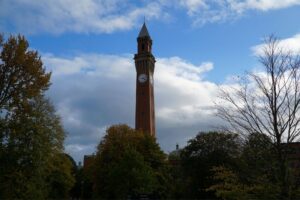
Birmingham Tolkien Trail: The Original Lord of the Rings Tour
United Kingdom | The complete guide to the Birmingham Tolkien Trail; the original Lord of the Rings tour. Discover what inspired J.R.R Tolkien’s fantasy epic!
I don’t think it’s any secret that both Chichen Itza and the Colosseum made such a lasting impression that I’ve been harping on ever since about visiting all Seven Modern Wonders of the World.
Both locations; the Roman amphitheatre in particular, resonated incredible mystique and wonder at how our ancestors created such grand, ambitious structures with very basic, limited technologies of the time. Deservedly so, each monument was clearly above and beyond any other man-made attraction I’d had the privilege to visit – until I took the Sagrada Familia tour.
Admittedly, construction is still on-going and using cutting-edge modern technology. Plus the church isn’t thousands of years old like the sites previously mentioned. It does have that wow factor though. It’s not often I come across something that stops me in my tracks and causes me to say wow out loud. On this occasion, I genuinely did. It is truly magnificent.
Since my visit, I’ve actually searched the nominee’s for the New Seven Modern Wonders of the World and was surprised to see that this masterpiece was not included in the final shortlist of 21. For me, it’s such an extraordinary feat of civil engineering I was convinced it would have been a contender.
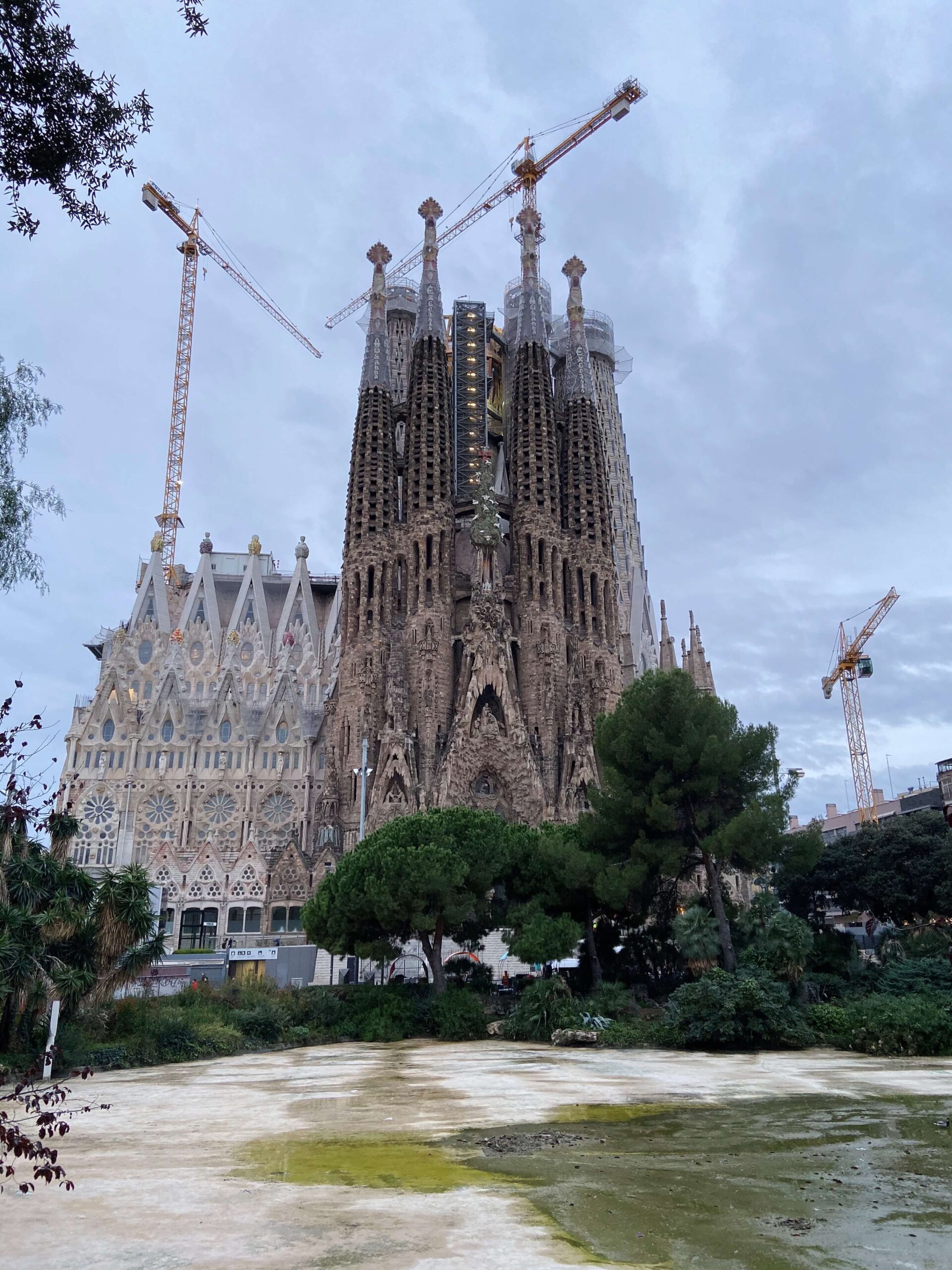
Towering high above the Barcelona skyline, the Sagrada Familia is a UNESCO World Heritage site and the jewel in Barcelona’s crown. That morning, I’d made a point of getting down to the world-famous basilica for about 08:00am with the intention of taking some pictures during sunrise. Whilst that did happen, it didn’t quite go to plan; scuppered by heavy cloud.
However, I did manage to take some good shots from possibly one of the most heavily featured locations on Instagram; the small park that has a wonderful opening where you can snap the Sagrada Familia from across a pond. At this time of morning, the park was completely empty with only the odd soul walking through on their way to work, however when I finished the tour circa midday, I looked over and it was extremely busy.
My usual advice – get there early if you can.
The Basilíca de la Sagrada Familia is a world-famous yet unfinished minor basilica at the heart of the city of Barcelona in Spain. Founded in 1882 by the Associaò Espiritual de Devots de Sant Josep (Spiritual Association of the Devotees of Saint Joseph), the group originally commissioned Francisco de Paula del Villar as the architect to oversee the design and build of the basilica. However, after citing differences of opinion, he departed and was replaced by Antoni Gaudí, who is famous for his portfolio of architectural work located across the Catalan city.
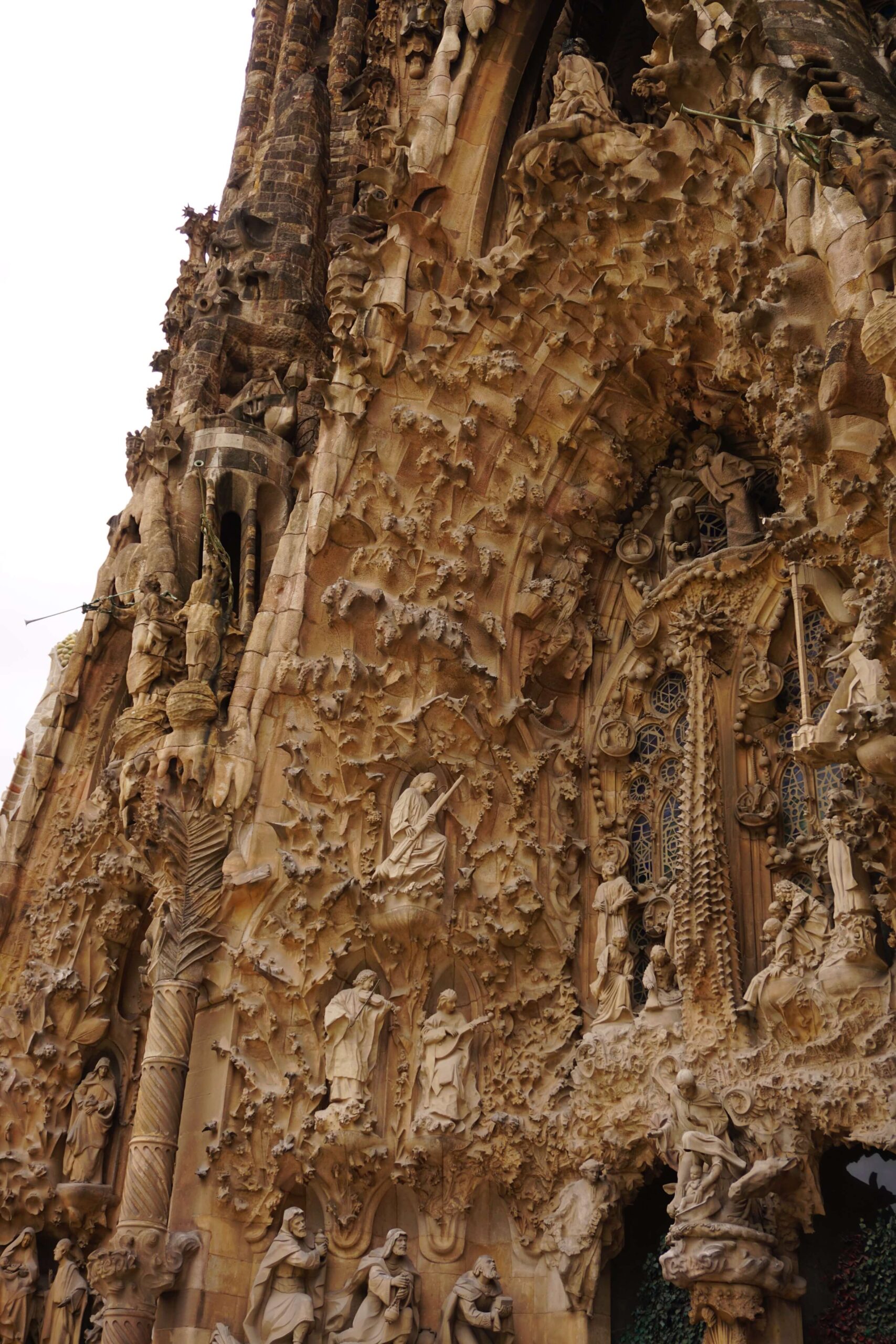
You can purchase tickets online from the official Sagrada Familia website. If you’re under 30 years old, you can secure a small discount on the price of your ticket. I chose the towers ticket and saved a couple of euros at a price of €30.00. Children under the age of 11 can visit the basilica for free with the basic ticket or, if on a guided tour, for a discounted price of €8.00.
I understand the Sagrada Familia tour is also included within the Barcelona City Pass package alongside Parc Guell. Furthermore, it also provides 10% discount on entry to other Gaudí attractions including Casa Mila. The different ticket options listed above, including entry to one of the Sagrada Familia towers, are available within the different ticket categories listed on the website. I can’t comment as to whether the City Pass is worth the money having never used it, but it could be an alternative, useful option to look at.
The opening hours differ according to various times of the year, and can be found here in the FAQ’s.
Prior to the trip, I’d decided to book the earliest tour possible at 09:00am. I had a long day planned culminating in a tour of Camp Nou, FC Barcelona’s stadium, in the afternoon, therefore I wanted to have enough time spending the morning at the Sagrada Familia. There are numerous ticket options (see above) including the opportunity to visit one of the two main towers in the building; the Passion Tower and the Nativity Tower.
Arriving at 08:45am, I joined a short queue at the entrance before passing through the attraction’s stringent security measures. Airport-style with scanners and trays, be sure to leave enough time to get through this area prior to your tour, especially if it’s later in the day when I imagine it’d be very busy.
After passing through, I collected my audioguide and joined the group as we stood within the grounds of the basilica admiring the Nativity facade. As the first tour of the day, we were waiting outside at the meeting point for fifteen minutes until the building opened, listening to the audioguide provide an excellent commentary detailing the history of the facade and specific areas of interest.
A magnificent piece of architecture directly influenced by the great Gaudí, four bell towers reach high into the sky portraying the crowning glory of Jesus Christ. The inner towers stand 107 metres tall with the sister towers at 98 metres respectively. Across the portico part of the facade is intricate, carefully crafted iconography depicting various events in the birth of Jesus Christ.
It is a wonder to behold and tells the story through three Christian virtues; the faith, the hope and the charity. It’s an uplifting, inspirational piece of work that, as someone who’s childhood was heavily influenced by the Christian faith via a Catholic school education, made me connect personally with the message Gaudí conveyed.
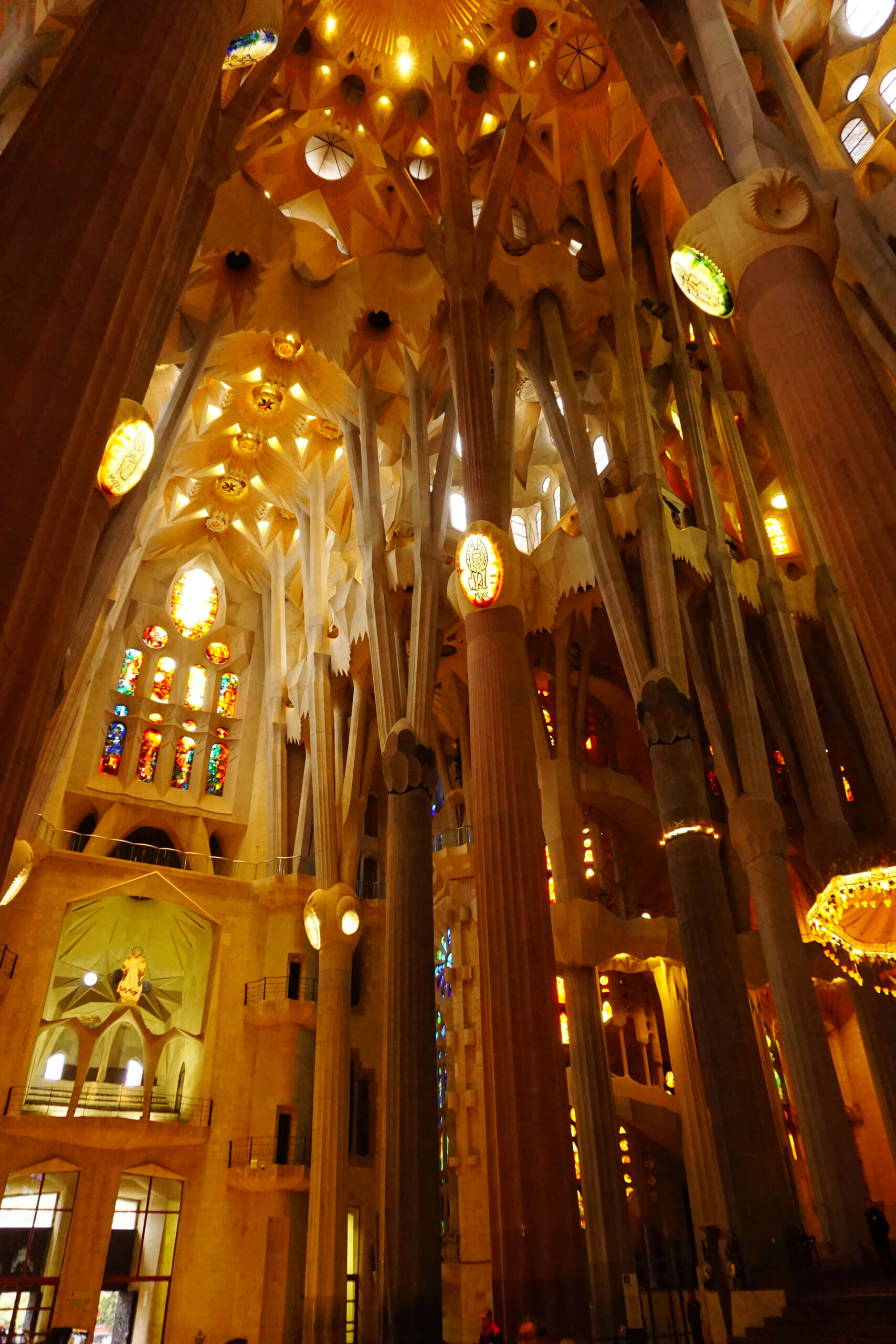
Moving through the doors and into the Temple of Light was for me personally a truly jaw-dropping experience. Huge columns drive their way upwards from the base of the nave, branching like tree’s as they support the weight of the phenomenal exterior above.
This was in fact what Gaudi aimed to purvey; the idea that religion and nature are intwined as one. It’s quite clear with the striking stained-glass windows spread around the interior, each resplendent as they resonant with all of the colours of nature; blue, green, red, yellow and orange combine to provide a magical hue of light within the basilica.
I’ve always liked visiting different places of religious significance, sensing some connection to a higher power and respecting the reverence of the building, but this was something different. Something unique. The ultimate place of dedication and respect.
I moved around to the front of the temple making my way over to the location of the crypt; built under the watch of Gaudí and completed by 1889. Peering through the windows of the vault, the congregation of the Sagrada Familia were present as a Priest led them through the morning service. Although crypts are typically dark, secluded settings buried underground, the genius of Antoni Gaudí decreed that the vault be surrounded by a ditch and perfectly aligned with the windows of the building above, enabling both light and air to flow in, illuminating the space for the comfort of those present.

From here, I made my way over to the lift taking visitors up the Nativity Tower. Remember, if you want to visit one of the towers, you need to ensure that you select this ticket option at checkout online; selecting which one of the two that you want to visit. At the entrance to the lift taking visitors to the top, security will ask to see your ticket. The lift can only accommodate 3-4 visitors (plus a site employee) at any one time, so be prepared for potentially long queues as you wait to enter.
I did some research prior to purchasing my ticket as I sought to discover any significant differences between the Nativity and Passion Towers. After reading an article dedicated to this dilemma, courtesy of The Better Vacation, I made the decision to visit the Nativity Tower.
One of the oldest area’s of the building most directly influenced by Gaudí, there is a bridge connecting two towers within the Nativity facade; I understand this is not the case on the Passion facade. This bridge affords the opportunity to take in some wonderful views across the city, as well as examine some of the tower’s most intricate details up-close.
Furthermore, upon disembarking down the stairs, there are balconies every so often where you can stop off for further examination of the architecture and its detail.
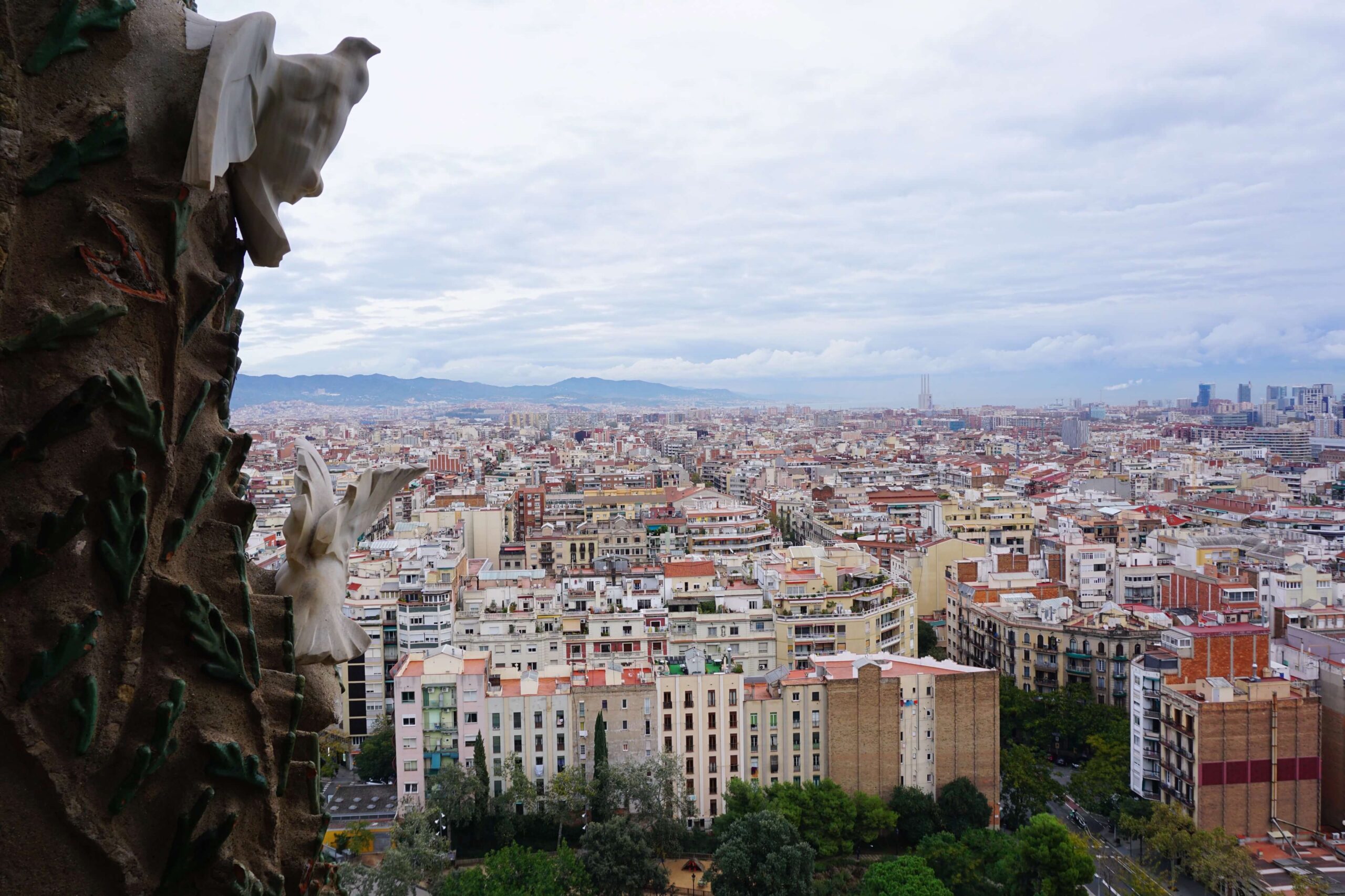
One thing to consider when travelling down the Nativity Tower’s 300-400 steps is that it is very narrow, so be prepared to be take your time exiting the tower in a queue and under these conditions. It was, however, a very worthwhile experience that I thoroughly enjoyed.
After visiting the tower, I then made my way back across the central nave and out of the doors in order to view the Passion facade. Recently completed, the message conveyed by Gaudí’s design is in stark contrast to the joyful, celebration of life resonating throughout the Nativity side; it’s morose, dark and filled with betrayal, pain and suffering – but no less beautiful.
The striking bone-shaped columns support a canopy protecting a portfolio of meticulously crafted sculptures illustrating various scenes from the passion; the final events in the life of Jesus. They include Judas Iscariot and his traitors kiss, Pontius Pilate deliberating his decision and the crucifixion of Christ. It’s a truly magnificent piece of art capturing the raw emotion and intensity of those events.

Before exiting the grounds of the Basilica, be sure to check out the in-house museum opened in 1961. The exhibition displays a wealth of information ranging from drawings and original/replica models through to photographs documenting each phase of construction. It provides an excellent insight into how the church has evolved over the years from its initial conception through to its modern-day form. The museum is definitely worth a visit.
Personally for me, the Sagrada Familia inspires awe and wonder on a similar level to the Colosseum and Chichen Itza. The sheer ambition to create such a grandiose masterpiece beyond the wildest imagination of 99% of the world’s population is testament to the absolute genius of Antoni Gaudí; I still struggle to believe it wasn’t nominated for a place on the list in the first place. Yes, it is one of Barcelona’s most popular tourist attractions but that’s for a reason; it truly is special. The dedication and attention to detail in order to construct this beautiful basilica over the last 137 years makes the Sagrada Familia worthy of anyone’s time and money.
Read more… Camp Nou Stadium Tour: Mes Que Un Club
Share this article with friends on social media…
Pin this article for future reference…

United Kingdom | The complete guide to the Birmingham Tolkien Trail; the original Lord of the Rings tour. Discover what inspired J.R.R Tolkien’s fantasy epic!

United Kingdom | A complete guide to the Sarehole Mill Tolkien Tour, where you can uncover the inspiration for J.R.R Tolkien’s The Lord of the Rings.

Depth of Mind is a travel blog providing honest, trustworthy advice to help aspiring travellers achieve an authentic travel experience.
All rights reserved – photography cannot be used without the express permission of the author.
© Depth of Mind 2019-2023
SIGN UP FOR THE NEWSLETTER
